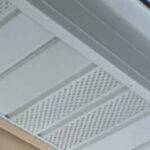Top Five Ways To Stop a Leak From Your Vent Pipe
Some of these options listed below address just the rubber gasket and others address the whole flashing system.1. The Rubber Ring Gasket
If you are looking for possibly the least expensive repair, sliding a new rubber ring over your existing pipe flashing will do the trick. Install caulk around the old rubber gasket before putting the new rubber gasket on. The problem here is that if you have misdiagnosed the leak and it is actually coming from the flashing kit or the shingles, then the rubber gasket won’t stop anything.2. Pipe Sleeve
The pipe sleeve works in similar fashion to the rubber gasket ring. It solely addresses the top rubber of the flashing and does not address anything related to the base of the flashing or the shingles around it.3. Standard Flashing With Extra Gasket
Replacing the whole flashing kit is definitely the best way to fix a pipe leak. Make sure you go with an aluminum base not plastic. Install a second rubber gasket over top of the new flashing. This way, you get double the protection on your flashing kit. This is the most affordable option that will also maintain integrity for the duration of the life of the shingles.4. The Ultimate Pipe Collar
Typically the most expensive remedy, This comes with a larger pipe collar flashing that has a custom sized rubber gasket. Everything about this product is bigger and stronger. It requires specific measurements for the pipe and a slightly more labor intensive installation.5. Shingles and Underlayment
No matter how great your flashing is, if you don’t install it the right way, it doesn’t work. There is a specific way to install the flashing. You only want the bottom half of the metal showing, nailing only at the edges and caulking any exposed nails. Using Ice and Water underlayment and roof cement in the correct places will also improve the performance.How To Install A Vent Pipe Flashing
Learn More About Roof Vents and Flashing Systems
Every part of your roof connects in some way to how well your vent pipe flashing performs. If you want a clearer picture of how these elements fit together, start with Parts of a Roof System for a breakdown of all major components. You can also read about the difference between gable, soffit, and ridge vents to understand how air moves through your attic, and why vent placement matters for moisture control.
Attic airflow plays a huge role in the health of your flashing seals. The comparison between ridge vents and attic fans and the article on soffit and ridge vents both explain how proper ventilation reduces trapped heat and humidity. To see how roof penetrations connect with these systems, read What You Should Know About Pipes on Your Roof. It covers vent stacks and other components that often require flashing attention.
If you’re planning to repair or replace flashing, it helps to understand nearby materials that protect your roof from leaks. Our guide to ice and water shields explains how underlayment membranes complement flashing, while how to inspect a leak from a vent pipe walks you through finding potential failure points before they spread.
When you’re ready to have your flashing checked or replaced, our team can help ensure your system stays watertight. Schedule an inspection to get started with a trusted Maryland roofing expert.




